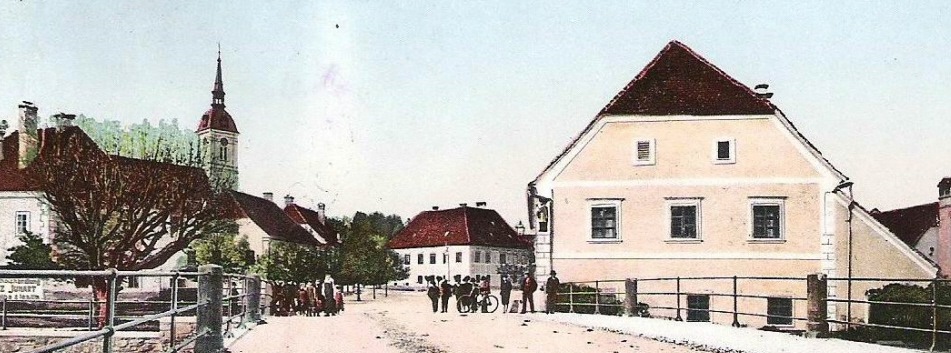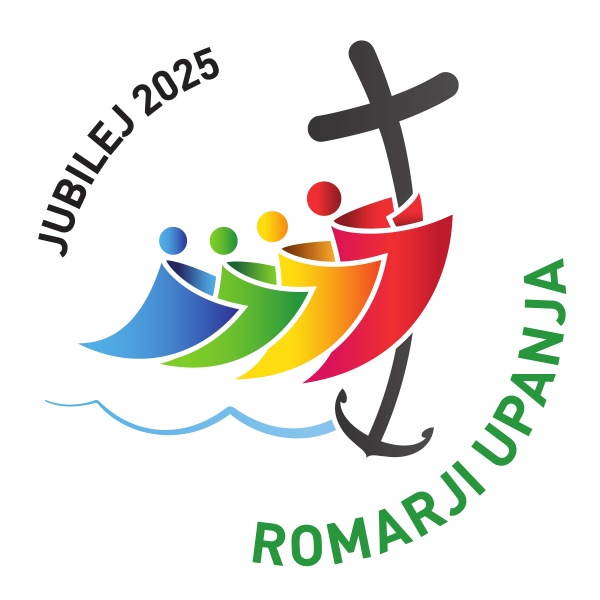The succursal church of Our Lady of Sorrows, Slovenska Bistrica; photo: Simona Kostanjšek Brglez
The precursor to today’s church was Mary’s chapel that once stood at the south town gate next to the city wall tower, which is first mentioned in 1379. The church was first rebuilt in the 16th century, but still holds the core of the 15th century gothic church. This can be seen in the partially preserved groin vault and polygonally concluded presbytery, a pointed arch portal made of stone on the facade and a bell tower with the upper part of a double-lancet window.
In 1629 the church was taken over by the Order of Friars Minor and a monastery was built next to it. In the second half of the 17th century great renovation took place with the help of Counts Vetter von der Lilie, who placed their tomb in the church. The bell tower was made higher, the nave got it vaults and a choir loft was added on the west side. In 1769 the aspirations to disband the church - a decade after the monastery had been dissolved by Josephine reforms - were unsuccessful. The greatest damage to the building was done in the beginning of the 1940s, when the gothic presbytery was shortened due to the widening of the nearby road.

Church interior; photo: Andrea Furlan
Light and voluminous interior of the church is decorated on the west by a choir loft with a wooden railing dating from the end of the 17th century. Its lean pilasters, bead and reel and deepened decorative sections are among the rarely preserved early baroque railings in the Slovene part of Styria. The church was partially painted when the baroque renovations took place. The triumphal arch wall holds a fresco depicting The Glorification of St. Francis Assisi, the founder of the men's Order of Friars Minor. The niche holding the Cross' altar is painted with angels holding the instruments of Christ’s torture.

View at the choir loft; photo: Andrea Furlan
The late gothic groin vaulted presbytery once ended with a wall with a painted high altar, which was demolished during the road construction work. Today’s classicist altar of St. Mary, originating from the parish church of St. Bartholomew, was remodelled and rearranged to fit its place when transferred here in 1947. Wooden wall altars, dedicated to St. Antony of Padua, St. Joseph, St. Florian and the altar of the Holy Cross were removed in the second half of the 20th century. The only things left of them are the twelve sculptures that are now placed in different places around the church. These sculptures, dating from the turn of the 18th century, are one of the few known works of the sculpture workshop of Franc Krištof Reiss († 1711) from Maribor, whose highest quality work is the altar of St. Francis Xavier in the pilgrimage church in Ptujska Gora.

Main altar of Our Lady of Sorrows; photo: Andrea Furlan
During the renovation at the beginning of the 21st century, the church lost its original baroque pavement, which included four inbuilt headstones from the 17th century. The coat of arms of the Counts of Vetter was on the three grave plaques (headstones) in the presbytery, while the one in the nave belonged to the Order of Friars Minor. St. Mary’s town church – a former monastery church – boasts with its early baroque architecture, paintings and furnishings. This is an example of the intensive sponsorship of the Counts Vetter von der Lilie, former land owner of Slovenska Bistrica as well as the monks of the Order of Friars Minor that lived there. Therefore the church is protected as a cultural heritage site of local importance in Slovenska Bistrica.
Simona Kostanjšek Brglez, ZRC SAZU (Research Center of the Slovenian Academy of Sciences and Arts), Umetnostnozgodovinski inštitut Franceta Steleta (France Stele Institute of Art History), 2019
This content was made for the project Umetnost za turizem. Umetnostnozgodovinske vsebine kot podlaga razvoju trajnostnega turizma Vzhodne Slovenije (Art for Tourism. Art Historical Themes as a Foundation for the Development of Sustainable Tourism of Eastern Slovenia) that is co-financed by the Ministry of Education, Science and Sport of the Republic of Slovenia and the European Regional Development Fund. This content was also made for the research program Slovenska umetnostna identiteta v evropskem okviru (P6-0061) (Slovenian Artistic Identity in European Context (P6-0061)), which is co-financed from the state budget by the Slovenian Research Agency of the Republic of Slovenia.
Lokacija:












